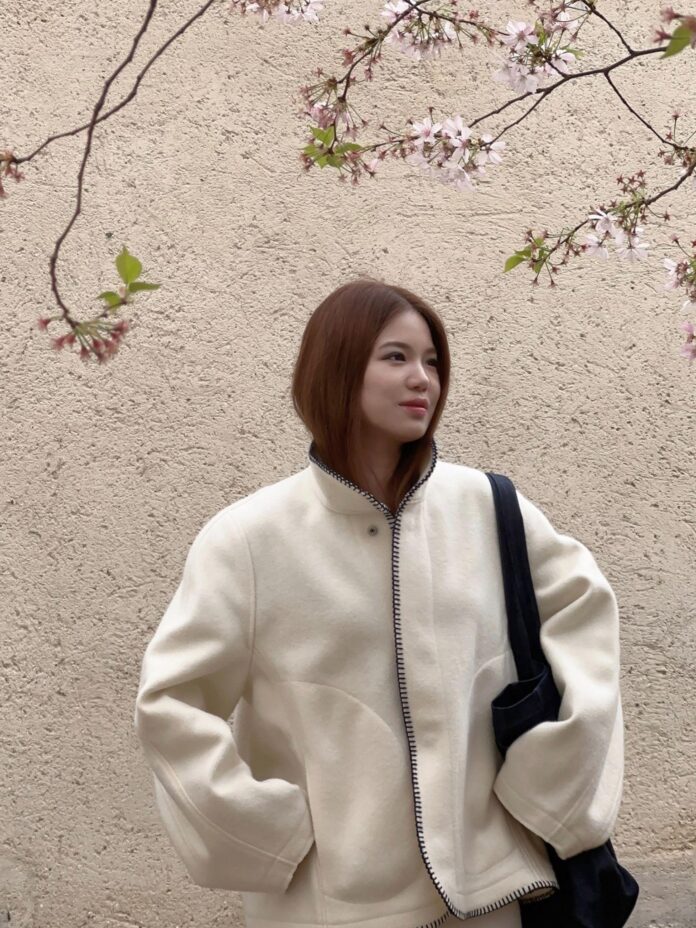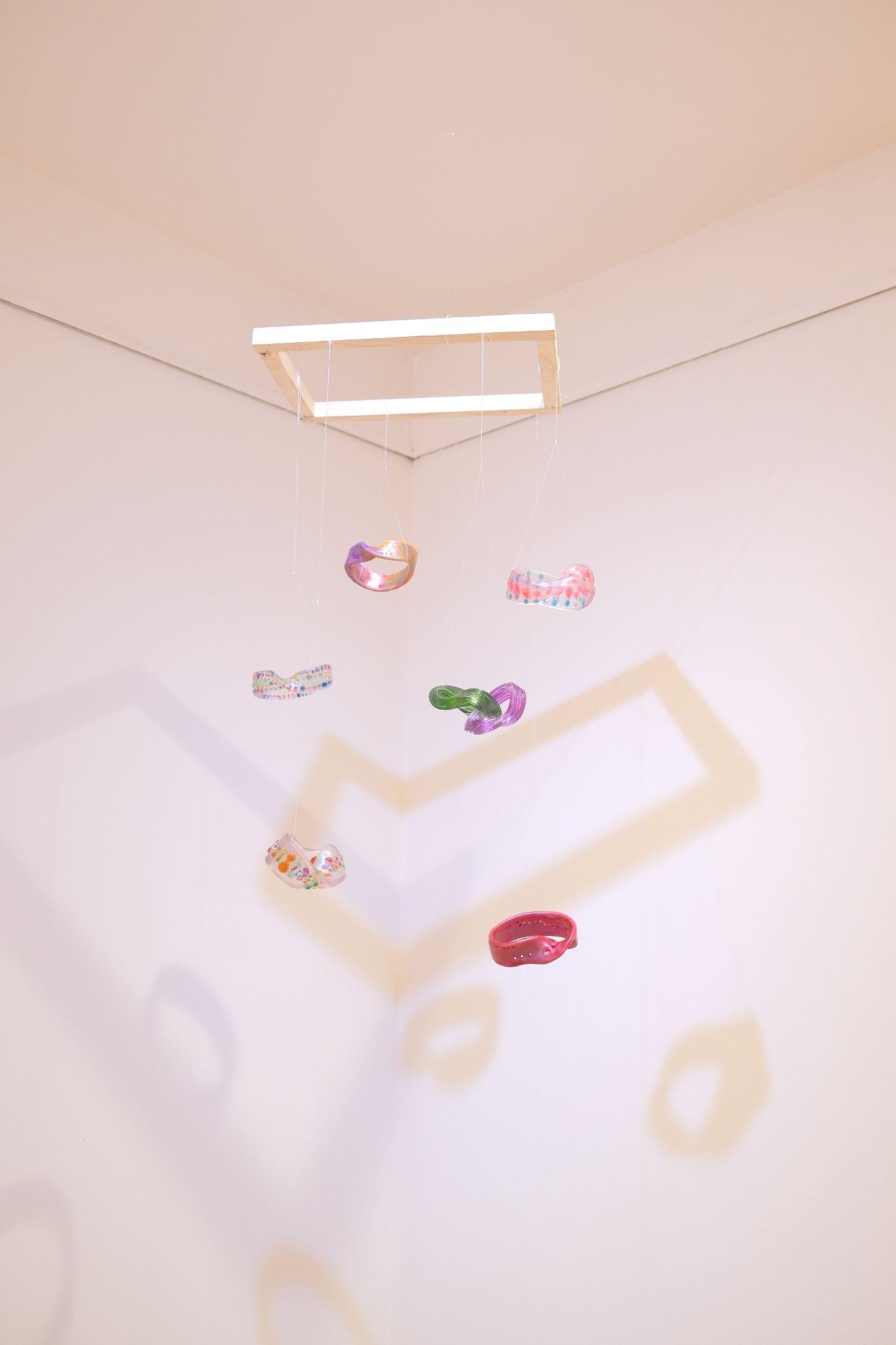Lexiong Ying, born in Shanghai and based in London, is an interdisciplinary artist whose practice spans 3D-printed sculpture, experimental photography, video, and mixed-media installations, with exhibitions across London, Paris, New York, and Barcelona. As an emerging figure in London’s contemporary art scene, she has participated in numerous exhibitions, including OOO curated by YDMD Studio, CHEEKY LONDON 25, and Fluid Horizons. Her work interrogates contemporary existential dilemmas and cultural mythologies, exploring emotional flux, technological saturation, and the fragility of human connection. Through playful symbolism and subtle irony, Ying constructs visual narratives that oscillate between philosophy and sensation, inviting viewers to recalibrate their perception of the present.
Her recent works should be read against a broader cultural background in which digital systems increasingly mediate human identity. London, with its layered art ecosystem and plurality of voices, offers fertile ground for such inquiries. Within this context, Ying positions herself not simply as an observer but as a commentator: her works engage critically with the infrastructures that bind us, rendering their invisible operations tangible. By situating passwords, plastic, and gesture as central motifs, she articulates how technologies of mediation redefine intimacy, trust, and the very notion of the self.
In OOO, Ying extends the framework of Object-Oriented Ontology, foregrounding non-human narratives, inter-object dynamics, and experimental strategies of display. The exhibition context accentuates the displacement of human centrality, suggesting that agency belongs as much to objects as to subjects. Within this setting, two of Ying’s works stand out for their ability to weave technological critique into sensory registers, questioning what it means to inhabit a world where the digital has reconfigured the texture of human presence.
How do you verify that you are you? takes the password as both object and metaphor. It identifies the absurdity of digital identity rituals, exposing their endless loops of creation, memorisation, forgetting, and resetting. Rendered as a Möbius-like sculpture, the work stages the repetitive gestures of authentication as choreography. Here, the Möbius band becomes more than form: it is an emblem of algorithmic governance, a reminder that identity in the digital realm is not a possession but a performance. Security becomes indistinguishable from fatigue, repetition mutates into parody, and the human self is folded into a system that demands constant proof of existence. The sculpture’s elegance conceals its critique: digital identity, for all its claims of stability, remains precarious, dependent upon fragile strings of code that can be lost, hacked, or forgotten.
Plastic Human Relations shifts attention from the individual self to the social interface. Two figures, sheathed entirely in translucent plastic garments, are placed before a wall saturated with social media icons. The figures incline toward one another, hands almost touching, yet intimacy is perpetually deferred. Plastic in this work is more than a surface; it is a metaphor for digital mediation itself—smooth, seductive, protective, and yet impermeable. The photographs capture micro-failures in the performance of connection: an awkward elbow, a hand hesitating before contact. In these moments, distance congeals, becoming nearly visible, exposing the fractures that underlie digital intimacy.
Ying’s photographs resist the celebratory narratives of connection promised by social media. Instead, they reveal the tension between proximity and isolation, showing how networks foster not cohesion but staged performance. Plastic seals warmth in while excluding genuine contact, much like platforms that simulate intimacy while monetising attention. The result is a portrait not of individuals but of interfaces—ephemeral, fragile, and staged.
Taken together, these two works form a diptych of technological introspection. One renders visible the exhausting loop of digital self-verification, the other crystallises the suspended instant of almost-connection. Both works expose the silent labour of objects and the textures of mediation, reminding us that trust and intimacy are precariously built.
Ying’s contribution lies in her ability to transform abstract critique into sensory encounters. Where much discourse on digital culture remains theoretical, her works render the invisible operations of code, platforms, and systems tangible. The Möbius loop translates algorithmic recursion into sculpture, while the crinkling of plastic materialises the fragility of mediated intimacy. These transformations reveal the way contemporary existence is structured by repetitions, delays, and blockages, shaping the rhythms of our everyday lives.
Philosophers such as Bernard Stiegler and Gilbert Simondon have argued that technology structures subjectivity itself. Ying’s practice echoes this insight by demonstrating that passwords, plastics, and platforms do not merely surround us; they actively reconfigure us. Her works capture this paradox: that the self is both mediated and diminished by the very systems that claim to protect and connect it. The critique is not nihilistic but reflective, offering viewers an opportunity to confront the conditions of their digital entanglement.
As an emerging artist in London, Ying demonstrates how new voices can intervene in global debates on technology and identity. Her works resonate beyond the gallery, speaking to the collective anxieties of living in a digitised world. They remind us that art can illuminate the fractures and repetitions of everyday life, not through didactic statement but through material play, irony, and poetic form.
In the quiet space between these works, the object-oriented perspective turns back toward the human. We too become objects in each other’s systems—encrypted, wrapped, and only partially seen. Ying’s art insists that recognising this condition is the first step toward reimagining what intimacy, trust, and identity might mean in an age of endless mediation.






